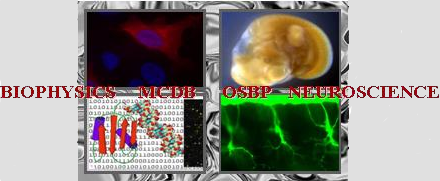Talk abstracts
Talk on Tuesday 03:15-03:30pm submitted by Courtney Dye
Perineuronal net remodeling in the medial prefrontal cortex in a rodent model of postpartum depression
Courtney N. Dye (Neuroscience Graduate Program ), Dominic Franceschelli (Psychology Department ), Kathryn M. Lenz (Dept of Psychology, Dept of Neuroscience, Institute of Behavioral Medicine Research, The Ohio State University), Benedetta Leuner (Dept of Psychology, Dept of Neuroscience, The Ohio State University)
Abstract:
Postpartum depression (PPD) affects 20% of new mothers each year and is detrimental for both the mother and offspring’s wellbeing, but the mechanisms causing PPD are not fully understood. Utilizing a rodent model of gestational stress that induces depressive-like behaviors and impairs maternal care postpartum, I have been exploring the possibility that microglia, the brain’s innate immune cells, become perturbed in the PPD model to affect brain and behavior. Microglia activation can lead to the remodeling of perineuronal nets (PNNs), extracellular matrix proteins that regulate synaptic function. We hypothesized that remodeling of PNNs in the prefrontal cortex (PFC) a brain region that regulates mood and maternal behavior, plays an etiological role in the onset of PPD. Pregnant female rats either underwent stress from gestational day (GD)7-20 or were left undisturbed (controls), after which animals were sacrificed on either GD21 or postpartum day (PD)8 and brain tissue harvested. Immunofluorescent staining was conducted to visualize microglia and their phagolysosomes and PNNs. The number of PNNs and co-localization of PNNs with phagocytic microglia were quantified with ImageJ and Imaris software. Irrespective of stress condition, we found increased microglia engulfment of PNNs at GD21 compared to PD8, which corresponded with increased PNNs from late gestation to the postpartum period in control animals. We found a significant decrease in PFC PNN number in pregnant rats following exposure to stress compared to control rats at both GD21 and PD8. However, there was not an increase PNN engulfment by microglia across stress conditions at either timepoint. We show for the first time that pregnancy is associated with PNN remodeling in the PFC, and stress during pregnancy induced a loss of PNNs in the PFC. Given PNN loss was not mediated by microglia phagocytosis, future work will assess whether microglia regulate PNNs via inflammatory signaling. Overall, PNN remodeling in the PFC is a novel mechanism for plasticity in the maternal brain, and further remodeling following gestational stress may contribute to the underlying pathophysiology of PPD.
Keywords: Microglia , Perineuronal Nets , Maternal brain
